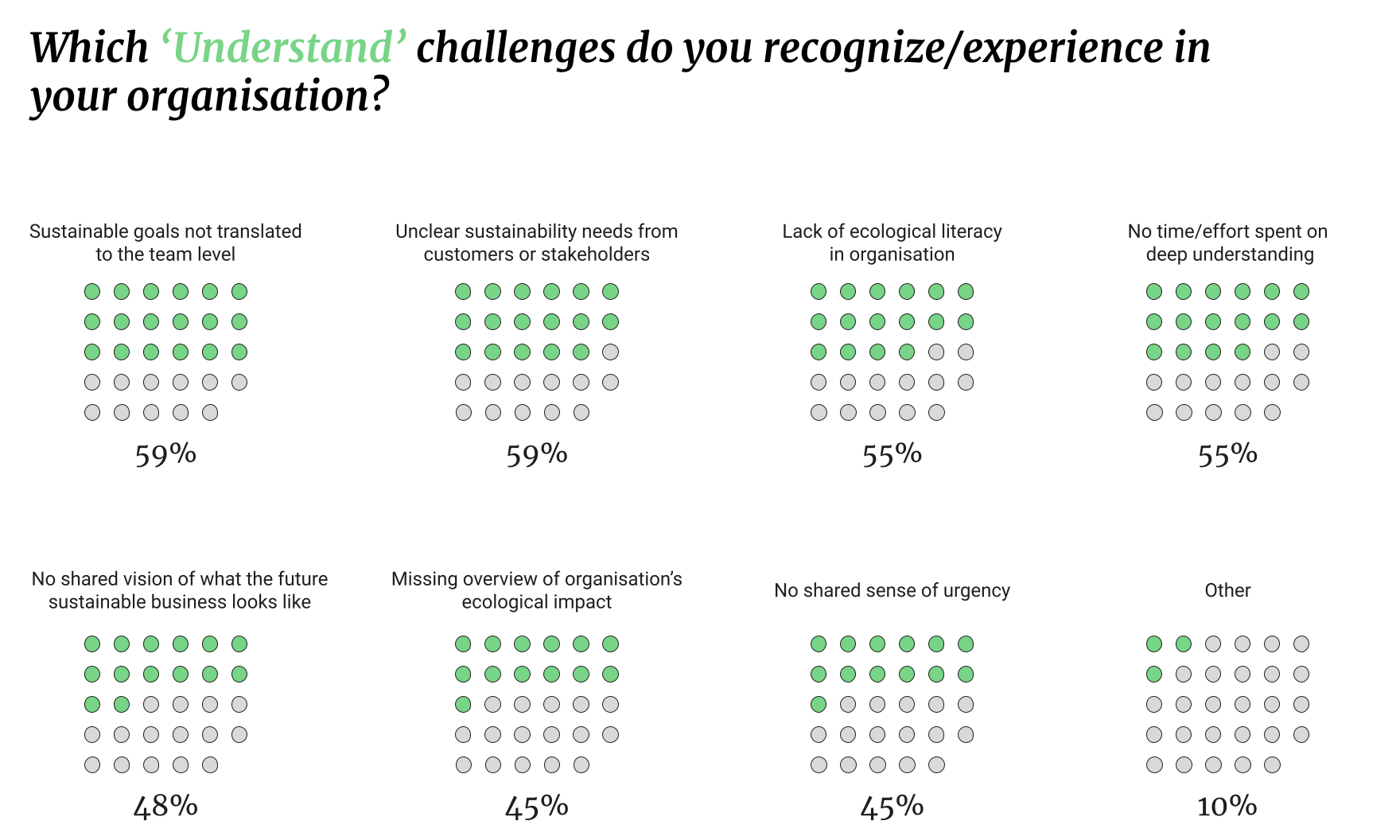Doing this work, and asking these questions can be uncomfortable or even distressing. We see the need for people across organisations to tune in to this new reality together. Creating a space to learn, discuss and reflect on what it means for them, for the business, and how it must translate into action.
Creating a safe space to engage and reflect
Firstly through engagement – staff, customers, and stakeholders need to be engaged in the transition and the risks and opportunities it presents. They need time and facilitation to translate the challenge to their roles. They will need to understand core sustainability science and its implications. Equally important is the ability to explore and be creative to interpret the strategic challenges in their roles.
This must be done with empathy. Any change is hard and this transition is so daunting that many of us want to avoid it altogether. People need to not feel judged and to be able to express their fears.
Understanding the sphere of control, the sphere of influence, and the wider system dynamics
We believe that understanding the system and your place in it can help to understand the nature of the challenge. Then individuals and teams can work on what is within their reach and act. This creates a sense of agency without individualising responsibility.
Understanding inside out and outside in
As we said, we think that empathy is essential. An understanding of all the stakeholders – team, customers, value chains – to know their needs and pains will help us to be more sympathetic and creative in our responses. This applies even more so to customers and stakeholders where there are greater gaps in our knowledge of their situations. All this should be underpinned by an accompanying empathy for the wider ecological systems that we are a part of and wish to come to a more sustainable balance with.
Defining a strategy
Organisations should aim for a wide engagement with all teams and stakeholders to build a comprehensive strategy for how they will meet their sustainability goals. Ideally, a vision will be assembled from the contributions of many parts of the business to create a collective idea of the future everyone is working towards.




